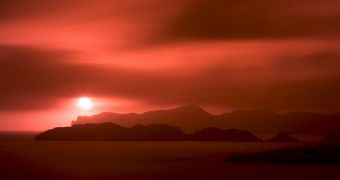A mineralogical and chemical analysis of the 'terra rosa' soil in the Mediterranean, carried out by Spanish and American researchers, revealed that the mineral red dust came from Sahara and Sahel, in Africa.
These two African regions emit 600-700 tonnes of dust every year, and this is what colored the soil in Mallorca and Sardinia, for example, between 12,000 and 25,000 years ago.
Before getting to an explanation of the origins of the reddish soil, the researchers emitted three hypotheses: the non carbonate residual accumulation theory, which states that soils come from the product of non carbonate weathering of the mother carbonate rock, the ascending 'sesquioxide' theory – which is based on the accumulation of iron and aluminum hydroxides following capillary ascent from the bedrock, and finally, the non-native soil accumulation theory – that basically said the soil could come from external sources, dust brought in by the wind included.
The first two were excluded after the analysis of the geochemical composition of the red soil, and the finding that the underlying rock was different, and “the hypothesis of non-native contribution was reinforced due to the geochemical value of the land coinciding with that of African dust,” according to Anna Ávila, co-author of the study and researcher at the Center for Ecological Research and Forestry Applications (CREAF) at the Universidad Autónoma de Barcelona.
The red soil in Southern Europe lays on carbonate rock, and can be found throughout the Iberian Peninsula, the South of France, the islands in the Mediterranean, Italy and along the coast of the Adriatic Sea, from Slovenia to Greece.
The 600-700 tonnes of emissions coming from Sahara and Sahel, caught the researchers' attention because they can cause several problems, AlphaGalileo reports.
Ávila explained that besides turning the ground red, African dust has “adverse effects on human health, such as respiratory problems and reduced visibility.
“It also arouses interest due to its implications where climate change is concerned, with the role that mineral aerosols play in the radiation balance, nutrient deposition and oceanic fertilization.”
Still, even if the analysis of the red soil shows that the African dust is the main compound of the palaeosols – the soils in in the Mediterranean region, especially on the island of Mallorca, "the underlying rock also contributes, probably with residual quartz," Ávila added.
This study has been published in Quaternary Science Reviews.

 14 DAY TRIAL //
14 DAY TRIAL //